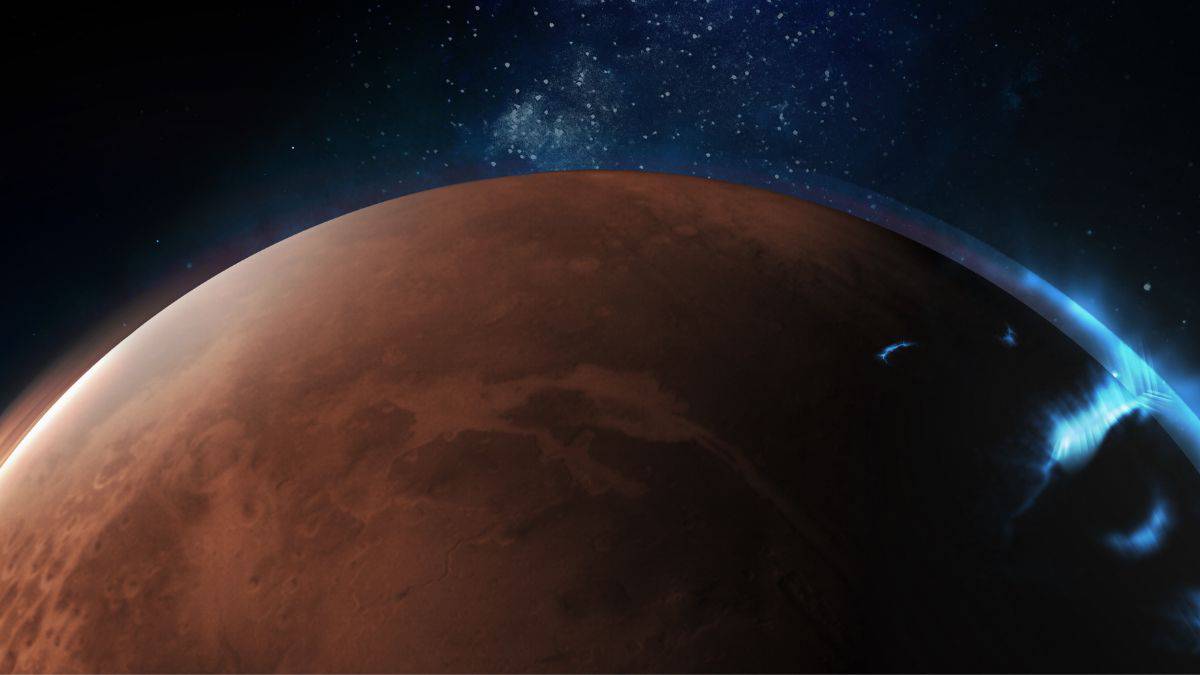A patchy new aurora variation above Mars has been discovered by EMM (The Emirates Mars Mission)

The Emirates Mars Mission (EMM) observed patchy ‘proton auroras’ above Mars, indicating unusually turbulent conditions where the solar wind interacts with the Red Planet’s upper atmosphere.
The United Arab Emirates Hope The spacecraft, which arrived in orbit around Mars on February 9, 2021, has been studying the Red Planet with equipment like its Emirates Mars Ultraviolet Spectrometer (EMUS). The mission team aimed to utilize the device to observe variations in the composition of Mars’ upper atmosphere, namely the prevalence of oxygen and carbon monoxide, as well as to detect hydrogen and oxygen fleeing into space as the Red Planet’s water slowly drains away.
EMUS is designed to detect ultraviolet radiation from protons (hydrogen nuclei) stimulated by the solar wind, a stream of charged particles that constantly flows off the sun. Rather than observing a homogeneous light at these UV wavelengths, EMUS revealed that the emission can sometimes become uneven.
Mars lacks its own global magnetic field. The Earth’s thin atmosphere functions as a barrier to the solar wind, deflecting the interplanetary magnetic field carried by the solar wind around the planet. As a result of this deflection, the solar wind slows and piles up as it passes over Mars, forming a concentration of charged particles known as plasma, which can interact with residual magnetic-field lines that remain in parts of Mars’ crust.
MAVEN observed Mars’ proton auroras in 2018, but the NASA mission only viewed them as a homogeneous glow on the planet’s dayside. EMUS’s great spatial resolution allowed it to detect patchiness associated with turbulent space weather.


